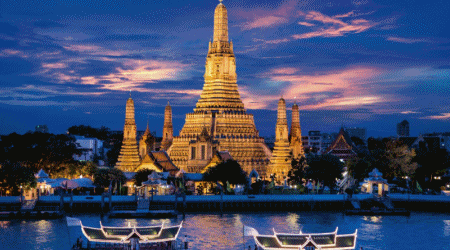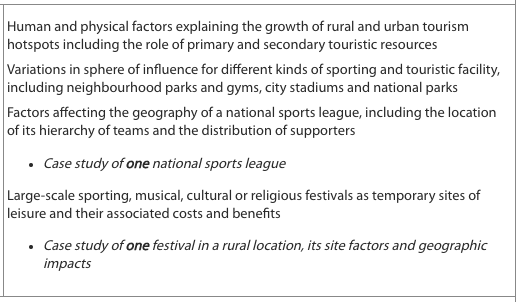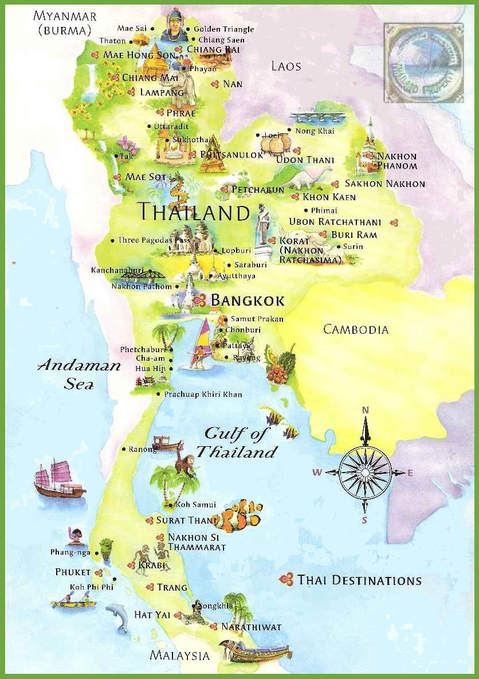Leisure, tourism, sport homepage
2. Tourism and sport at the local and
national scale
Syllabus Link: How physical and human factors
shape places into sites of leisure
Tourism
Factors Explaining the Growth of Tourism Hotspots
Human and physical factors explaining the growth of rural and urban tourism hotspots including the role of primary and secondary touristic resources
Introduction
Activity: What spots are hot spots?
X-Word puzzle: Tourist attractions & hotspots
Explore: The best in travel 2018
Reading: Tourism hotspots
Explore: Places where tourism is increasing and decreasing the fastest
X-Word puzzle: Tourist attractions & hotspots
Explore: The best in travel 2018
Reading: Tourism hotspots
Explore: Places where tourism is increasing and decreasing the fastest
|
|
|
Leisure
Sphere of Influence of Sport & Tourism
Activities: Sphere of influence of sport and tourism
Reading: Sphere of influence of sport and tourism
Mapping: Bangkok Leisure sphere of influence
Leisure: Large Scale Festivals
Reading: Intro to temporary sites of leisure
Case Study: Thai Full Moon Party on Ko Phangan
Activity: Full moon party case study
Role Play: Full Moon Part rockin roles
Reading: Intro - Thai Full Moon Party is now a trashy disgrace
Activity: Full moon party case study
Role Play: Full Moon Part rockin roles
Reading: Intro - Thai Full Moon Party is now a trashy disgrace
|
|
|
|
Article: The worst party in Asia
Article: Back packers can help economies
Document: Full moon party looks for sustainable growth
Sport
Geography of a Sports League
Factors affecting the geography of a national sports league, including the location of its hierarchy of teams and the distribution of supporters
The EPL: Case study of one national sports league
|
|
|

Activity: Geography of a sports league
Map: Interactive map of EPL supporters
Article: The premier league goes global
Article: Why are there fewer teams from the north?





